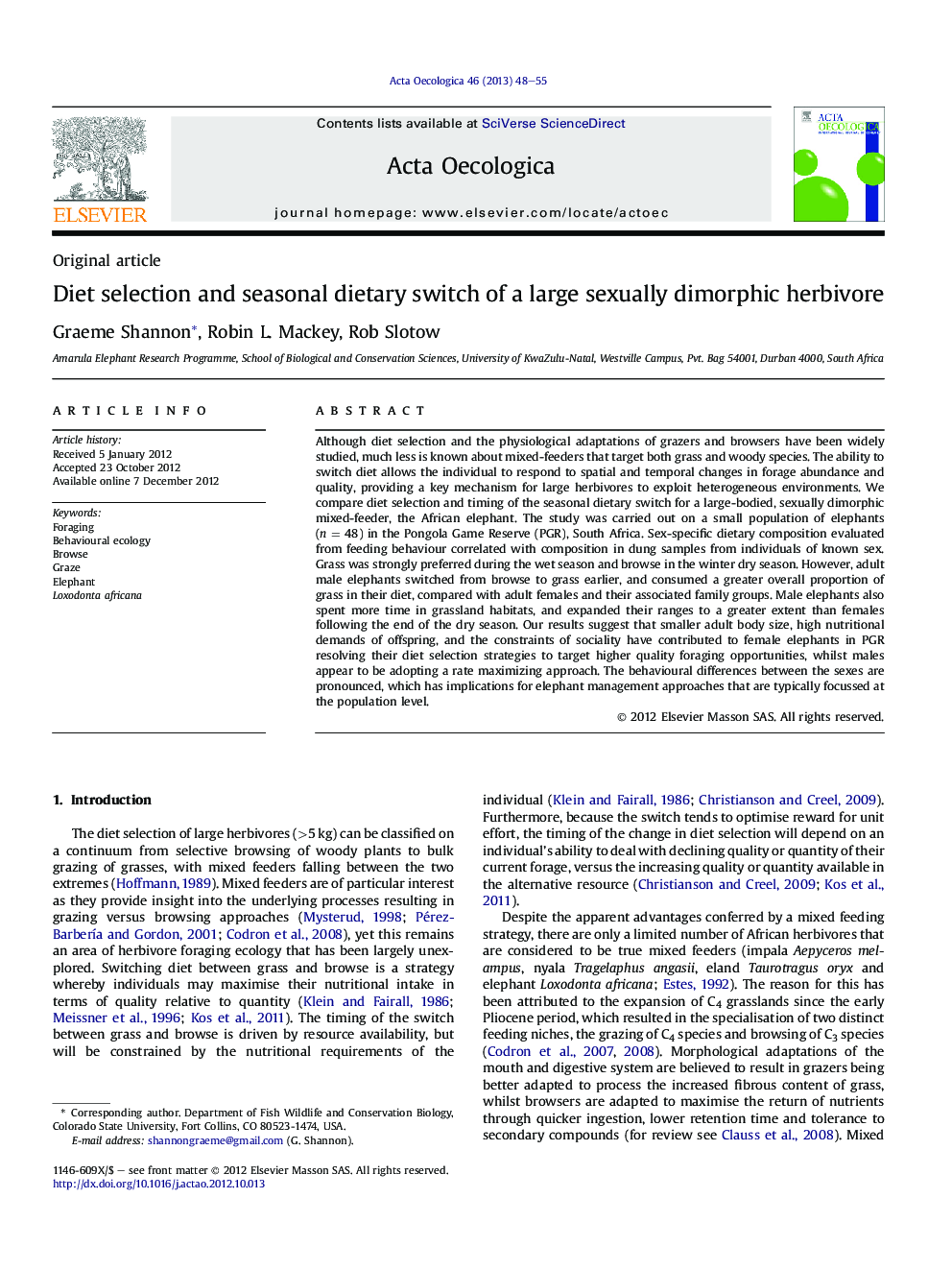| کد مقاله | کد نشریه | سال انتشار | مقاله انگلیسی | نسخه تمام متن |
|---|---|---|---|---|
| 4381151 | 1617725 | 2013 | 8 صفحه PDF | دانلود رایگان |

Although diet selection and the physiological adaptations of grazers and browsers have been widely studied, much less is known about mixed-feeders that target both grass and woody species. The ability to switch diet allows the individual to respond to spatial and temporal changes in forage abundance and quality, providing a key mechanism for large herbivores to exploit heterogeneous environments. We compare diet selection and timing of the seasonal dietary switch for a large-bodied, sexually dimorphic mixed-feeder, the African elephant. The study was carried out on a small population of elephants (n = 48) in the Pongola Game Reserve (PGR), South Africa. Sex-specific dietary composition evaluated from feeding behaviour correlated with composition in dung samples from individuals of known sex. Grass was strongly preferred during the wet season and browse in the winter dry season. However, adult male elephants switched from browse to grass earlier, and consumed a greater overall proportion of grass in their diet, compared with adult females and their associated family groups. Male elephants also spent more time in grassland habitats, and expanded their ranges to a greater extent than females following the end of the dry season. Our results suggest that smaller adult body size, high nutritional demands of offspring, and the constraints of sociality have contributed to female elephants in PGR resolving their diet selection strategies to target higher quality foraging opportunities, whilst males appear to be adopting a rate maximizing approach. The behavioural differences between the sexes are pronounced, which has implications for elephant management approaches that are typically focussed at the population level.
► We explored diet selection and timing of the seasonal dietary switch for male and female elephants.
► Grass was strongly preferred during the wet season and browse in the winter dry season by both sexes.
► Male elephants switched to grazing earlier, and consumed a greater overall proportion of grass.
► Smaller body size and social constraints led to female elephants targeting higher quality forage.
► These results have implications for the population-level management of elephants.
Journal: Acta Oecologica - Volume 46, January 2013, Pages 48–55